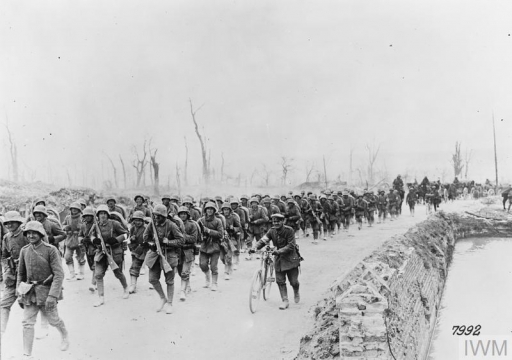German forces began a thrust across Northern France on 21 March 1918, initially threatening to overwhelm the Allies.
Operation Michael, or Die Kaiserschlacht (Emperor’s Battle), was the first phase of a campaign aimed at winning the Great War while the Germans still had the advantage.
With Russia out of the war following the Bolshevik revolution, Germany had been free to move large numbers of troops west, while Britain and France were still awaiting the arrival of hundreds of thousands of soldiers from their new American ally.
There were clues to German intentions. A month before Operation Michael, the war correspondent Philip Gibbs reported in The Daily Telegraph: “At any moment now we may see the beginning of the enemy’s last and desperate effort to end the war by a decisive victory – for the offensive which he has been preparing for months is imminent.”
But when the blow came, it was still a shock.
After an artillery bombardment using gas, the German armies attacked in mist on a 60-mile front stretching from Arras to south of St Quentin in the Aisne. Stormtrooper units forged ahead to penetrate the Allied lines, throwing them into further disarray.
Erich Ludendorff’s assault threatened to split apart the French and British armies. One almost immediate result of the crisis was the Allied decision to create a unified military command. The Doullens conference of March 26, putting the French general, Ferdinand Foch, in overall charge, would have significant implications for the conduct of the First World War in 1918.
The Germans advanced over the old battlefields of the Somme (themselves a formidable obstacle) before they were eventually held by a British and Australian force near the crucial railway hub of Amiens.
Although called off on April 5, Operation Michael was to be followed by a series of operations striking at the Allies in Flanders, the Aisne and Champagne. At times, there were fears for the safety of Paris and the Channel ports.
It was in April, 1918, as the next German attack threatened Flanders that General Sir Douglas Haig issued one of his best known orders of the Great War – with their ‘backs to the wall’ British forces were instructed to fight to the last.
By the summer however, the German momentum had run out and it would be the Allies, now strongly reinforced by the Americans, who would seize the initiative under Marshal Foch.
Sources: Wikipedia/Daily Telegraph Archive/various
Images courtesy of Imperial War Museums, © IWM Q 51466
Posted by: CN Editorial Team
